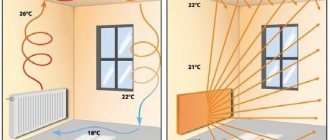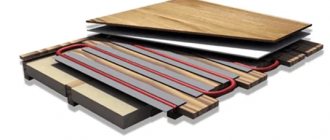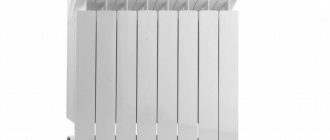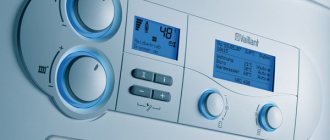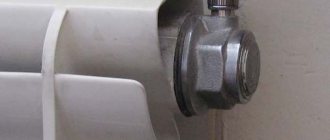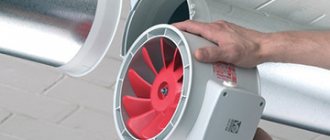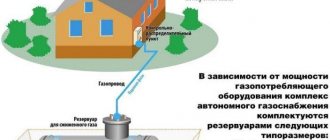Why does scale form?
Reducing the concentrations of dissolved hardness salts caused by the presence of calcium and magnesium ions is today a standard task called water softening. At the same time, hardness reduction equipment uses ion exchange technology, in which calcium and magnesium ions are absorbed on the filter media (ion exchange resin), but sodium ions are released in return. Sodium is contained in excess in the active layer of resin included in the installation. During periodic regeneration, a concentrated saline solution, slowly flowing through the filter media, again charges it with Na ions, freeing it from the elements Ca and Mg.
Calcium and magnesium are the main chemical elements that form scale.
The regeneration process is fully automated. You just need to monitor the level of tableted salt in the salt solvent tank and periodically (about once a week) replenish it. A water softening installation is usually installed as a second stage, since it has requirements for the source water: the absence of dissolved iron, hydrogen sulfide, and manganese. If ozone equipment is installed as the first stage, effectively removing all these and other contaminants, then the ion exchange resin in the softening unit will serve for a long time, guaranteed to reduce the content to a given level.
How to deal with scale?
What is preferable: removing lime that has already appeared or preventing its appearance? Obviously, both are required. One way to prevent its rapid growth is not to bring the water almost to a boil. Scale is formed when water is heated or evaporated, and the higher the temperature of its heating in the water heater, the more intense the process of crystallization of dissolved salts and lime deposition. Therefore, if you use water with a temperature of up to 70 °C, and not 80–85 °C, for which modern water heaters are designed, then massive “deposits” of lime in the tank and on the heating element may not appear, and a thin layer of it, if necessary, is much easier to remove .
Another way to prevent scale is to soften (reduce the hardness level) the incoming water with a magnetic filter. It is usually installed on the pipe through which water enters the apartment. The device's magnetic field acts on electrically charged water molecules - dipoles - and prevents the formation of solid scale on the surface of the heating element.
Hardness salts
Hardness salts in water (in normal doses) do not have a harmful effect on the human body; moreover, they must be present in water (at least 3 mEq/L, with an average concentration in the source water of 7 mEq/L). However, their presence leads to the formation of scale on the walls of water heating devices and pipes in the heating supply line and worsens the heat exchange process. Because of this, overheating of the heating elements occurs, increasing energy consumption, which can cause water heater failures (requirements for water heating devices are 0-2 mg-ZKV/liter).
Scale formation is a natural process during boiling.
Due to different requirements for hardness indicators in cold and hot water mains, water treatment systems are installed in a certain way, allowing them to be maintained as required throughout the entire water supply circuit. Today, more and more people, aware of the negative consequences of excess salts in water, are striving to soften the water, while maintaining the mineral composition of the water necessary for our body.
Why scale is dangerous and how to get rid of it
One of the dangers when using boilers of any type for heating and hot water supply is the formation of scale on the internal surfaces. As a result, over time, a thick heat-impermeable layer is formed, which reduces heat transfer and clogs the lumen of the pipes. This significantly reduces the efficiency and performance of the water heating system.
What is scale
It is a light coating, which contains mainly salts of elements such as calcium and magnesium. Under normal conditions, they are almost always present in a dissolved state in tap water. With a local increase in temperature, salts fall out and settle in layers on the heated areas.
This happens on electric heating elements or inside the heat exchanger tubes of various types of boilers. The rate of scale formation depends on the type of water (how “hard” it is) and the intensity of use of the device. The harm from such growths is as follows:
- lead to excessive energy consumption (more gas or electricity is required to maintain the required temperature);
- the temperature stress of the metal increases (it is less well cooled by water on the reverse side and may burst or melt);
- boiler productivity decreases due to a narrowing of the flow area;
- when large broken fragments appear in the water, bottlenecks can become completely clogged, which will lead to the system stopping;
- breakaway scale elements can damage valves, valves, and coils.
How to deal with scale
Double-circuit boilers and systems that heat running water suffer most from scale. The heating system is a closed circuit in which the amount of water (and the salts it contains) is limited.
In single-circuit boilers, scale formation can be completely avoided if distilled water is used instead of ordinary water obtained directly from the water supply. In systems for producing hot running water, as it is consumed, fresh water comes in, bringing with it a new portion of salts. The more active the system is, the more sediment there is.
Here are some of the most popular techniques that are used to combat scale:
- removal of dissolved salts using electromagnetic and magnetic filtration methods;
- cleaning contaminated surfaces by physical force with brushes or scrapers (the effectiveness of such cleaning for coils is extremely low, due to the inaccessibility of many places);
- flushing using a strong stream of water under high pressure (most often carried out together with the chemical method);
- the use of strong reagents to dissolve crystallized sediments. This method is effective if it is possible to completely dismantle the clogged section of the heat exchanger or heating element;
- use of special equipment for flushing without dismantling the boiler. The complex includes a reservoir with a solution, a heating unit, and a circulation pump. It is also necessary to completely remove the solution from the system after cleaning.
Why is it better to leave chemical cleaning to professionals?
Since scale formation is almost inevitable, it must be removed at certain intervals. The most effective and efficient method of cleaning boilers is chemical. But cleaning boilers yourself is fraught with numerous difficulties. Here are a few main reasons:
- it is necessary to conduct a chemical analysis of water and scale in order to select the necessary reagents for cleaning;
- it is necessary to use a special substance for each type of pollution;
- you need to purchase specialized equipment and develop skills in handling it.
Thus, for self-cleaning it is necessary to disassemble the boiler. If this is not possible, specialist help will be required. And annual cleaning of the system with running water must be done independently.
Ph level
The rate of scale formation and the rate of oxidation reactions is also influenced by the acid-base balance indicator - Ph. According to SanPinN rules, in normal drinking water it should be 6-9 units, it is better to strive for 7 units.
At the same time, the pH standards of water intended for various industrial needs differ from the pH standards of drinking water:
- in public swimming pools this standard is 7.2-7.4;
- in the production of beer, a water base with indicators of 6.0-6.5 is used;
- for soft drinks 3.0-6.0;
- in heat supply systems, the parameter is indicated at a temperature of +25ºС and is in the range of 7.0-8.5 for open systems and in the range of 7.0-11.0 for closed ones;
- in power engineering and steam boilers no less than 8.5;
- in cooling systems: for circulating and additional water 6.5-8.5, in circulating cold circuit 6.5-8.2, hot circuit 6.8-8.0.
Boiler cleaning products
Preventative flushing of gas boiler heat exchangers using special liquids is necessary for the normal functioning of heating equipment. Over time, scale forms on the internal channels, which impedes the movement of coolant. This can lead to increased gas consumption, overheating of the device and additional load on the circulation pump.
Periodic flushing reduces the risk of heating equipment breakdowns and spending on expensive components.
When to flush boilers and heat exchangers
At the manufacturer's factory, gas boilers are accompanied by detailed instructions, which indicate cleaning methods and the frequency of the procedure. But these recommendations are relevant under ideal operating conditions, which in reality are not always observed.
The following factors indicate the need to flush boiler heat exchangers:
- energy consumption has increased, but heating efficiency has remained the same or decreased;
- the circulation pump operates with characteristic noise;
- the heating time of heating radiators has increased;
- defective rubber seals need to be replaced;
- a build-up of dirt, scale and scale has formed on the heat exchanger elements, which can only be removed mechanically.
In order to prevent the critical condition of the equipment, you need to use liquid for flushing boilers for preventive purposes once a year. Cleaning the heat exchanger through which high-hardness water circulates is required every 6 months.
It is also necessary to periodically remove soot deposited on the surface of the heating device body using a heat exchanger cleaning agent. There are no exact standards for calculating the interval between cleanings. The amount of plaque depends on the quality of the supplied gas, the presence of filter modules and design differences of the boiler. Therefore, the procedure is carried out as soot accumulates.
If the coolant is antifreeze, the frequency of cleaning depends on the brand of equipment. During production, special substances are added to some devices to prevent scale formation. But even in this case, preventive flushing is recommended to be carried out at least once every 2 years.
Methods for flushing the heat exchanger
To flush boilers, you can use special solutions and devices or clean the parts manually. The choice of method depends on the nature of the contamination and the material of the heating equipment. Let's consider 3 main options.
- Chemical washing of heat exchangers is the treatment of contaminated equipment surfaces with special reagents. As a result of chemical reactions, lime deposits are washed out.
- For manual washing, the heat exchanger is disassembled to provide access to the heating elements. To simplify the process, you can soak the device in a container with a weakly concentrated acid solution.
- Hydrodynamic cleaning. The process of washing away lime deposits occurs using high pressure water pressure. Sometimes chemical reagents or mixtures with abrasive particles are added to the liquid.
Conclusion
From the above, we can draw the following conclusion: the mineral salts of calcium Ca and magnesium Mg dissolved in water are vital for our body, unless, of course, their concentration exceeds established standards. It is these minerals that form scale on the walls of teapots when boiling. If scale does not form, then the water is considered depleted; its properties are close to distilled water and its use is strictly not recommended. So there is no need to be afraid of scale, if it is white and the rate of its formation is normal, then the chemical composition and hardness and acid-base environment of the water are also in a normal state.
The settled water from the kettle with limescale can be drunk. This will not harm your health, unless, of course, you eat the stone scum itself.
In any case, if you have any doubts about the quality of drinking water, you need to take a sample and do a laboratory analysis. Based on this, you can select a water treatment system with the appropriate characteristics. And if you are confused by the white stone-like layer on the walls of the kettle, just pour a packet of citric acid into it, boil it a couple of times and rinse well.
Scale formation
Where does scale come from? What is hard water? After all, it seems that all the water in our pipelines undergoes centralized treatment. scale formation occur when working with such “purified” water ?
Let's start from afar. Water cannot be initially perfectly clean. It already has some composition, and it can be either soft or hard. It doesn’t matter whether you take water from an artesian well or a primary source in the form of a lake or river. It will still contain hardness salts, another question is in what composition. Hardness salts are calcium and magnesium salts. Their percentage in hard water can be very different. It's not necessarily 50/50.
The central water supply system spends little time on softening when purifying water. Her main concern is to disinfect the water so that no one gets poisoned. As a result, we use hard water, both at home and in industry. Moreover, it can be either simply tough or very tough. And scale formation is a consequence of working surfaces with hard water.
Scale is hard calcium deposits that are difficult to dissolve and are formed as a result of the formation of steam or heating of water. In addition to limescale, when water is heated, carbon dioxide is also formed. But its quantity matters only on an industrial scale when working with hard water. So in boiler rooms, when descaling boilers, it is necessary to ventilate the premises, but when boiling water, it is also necessary to ensure good ventilation in the room.
Scale formation during heating of water always occurs if the water is hard. Only the scale may be different, because... Water hardness may not necessarily be carbonate. It is clear that the cause of the formation of carbonate scale is calcium and magnesium salts. If scale formation occurs due to calcium silicate, then the scale turns out to be sulfate. Silicic acid compounds of substances such as iron, aluminum or calcium lead to the formation of silicate scale. So, the formation of scale after working with hard water does not mean that it is carbonate scale that has fallen out. Although it should be clarified that carbonate scale is the most common.
There is an opinion that the wider the diameter of the pipe that is used to heat the boiler, the longer it will work, and the less scale will form on such a wide pipe. Of course, a wider pipe will last longer without descaling, but the deposits will still be there, and descaling will take place in both that pipe and this one. Often, boiler rooms use more metal-intensive and wider pipes to avoid rapid failure due to scale. But here it should be noted that if you do not use scale filters and do not descale the boiler on time, thick pipes will not help.
